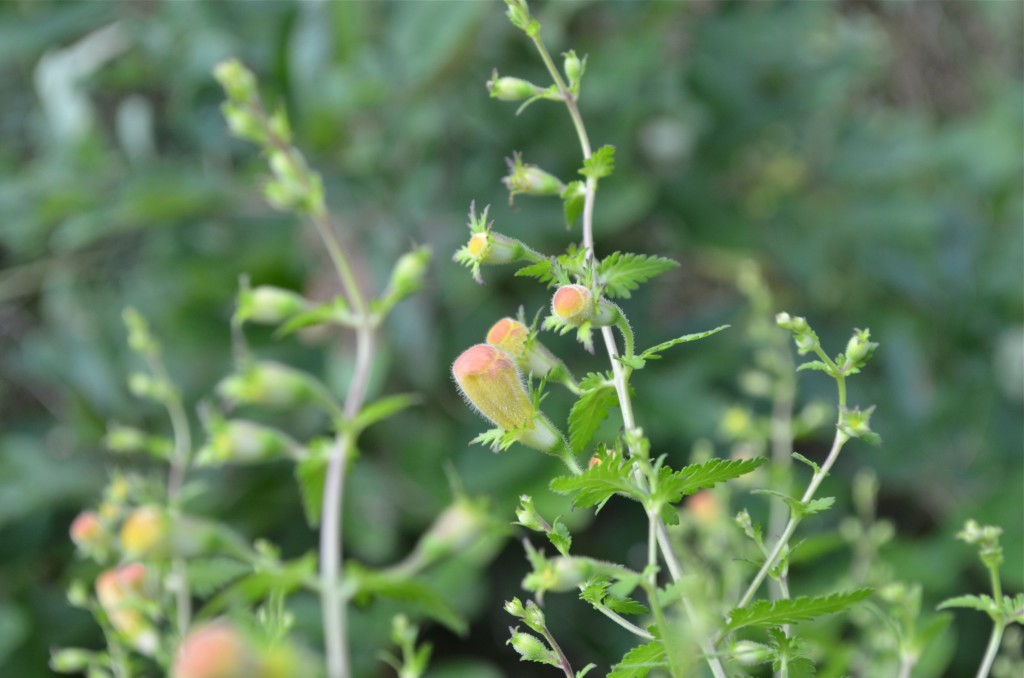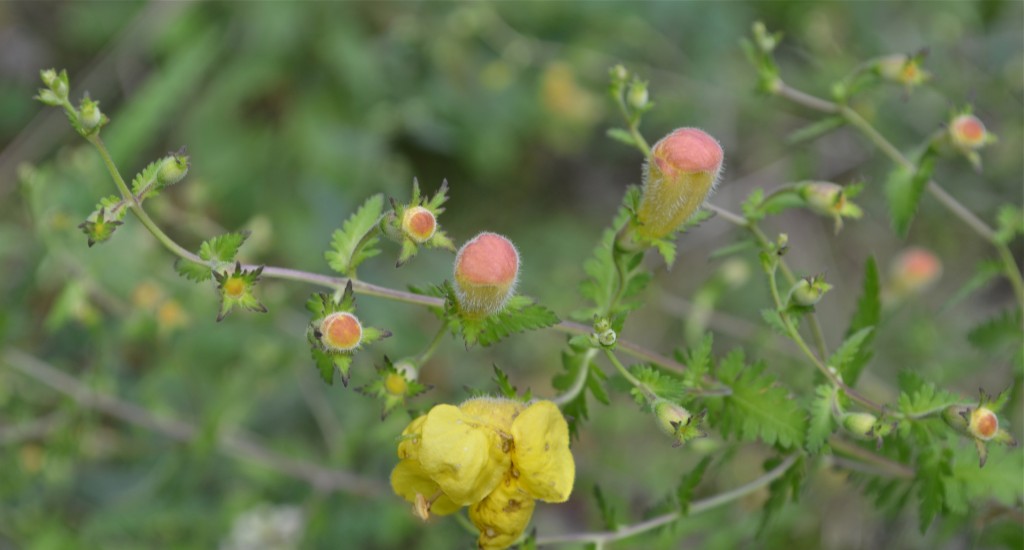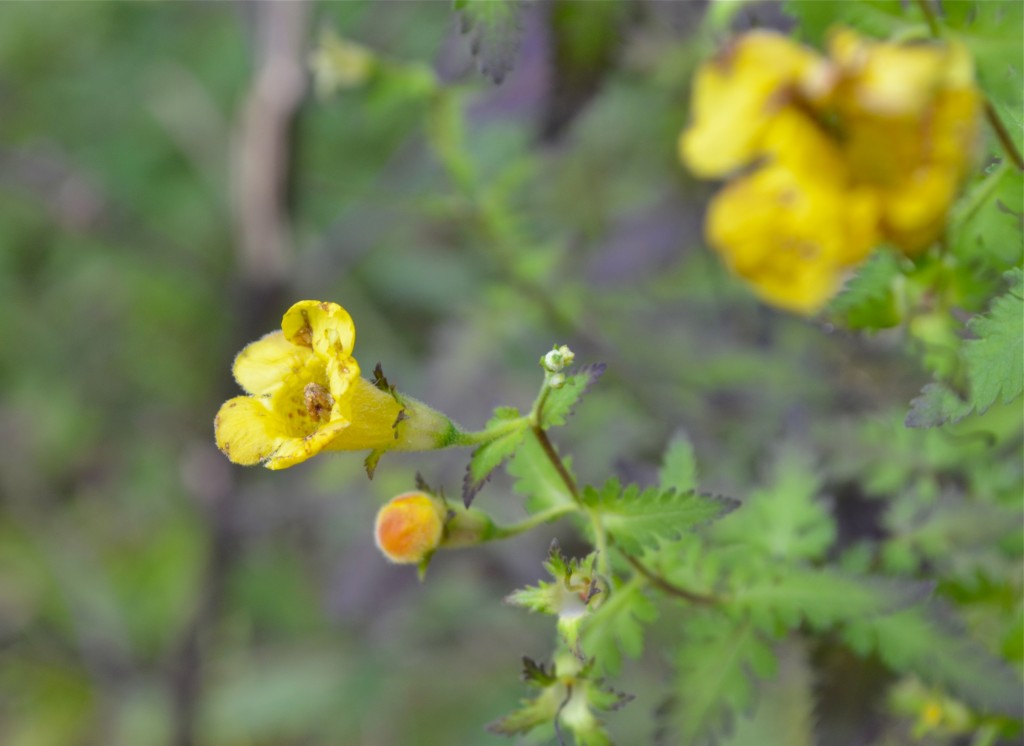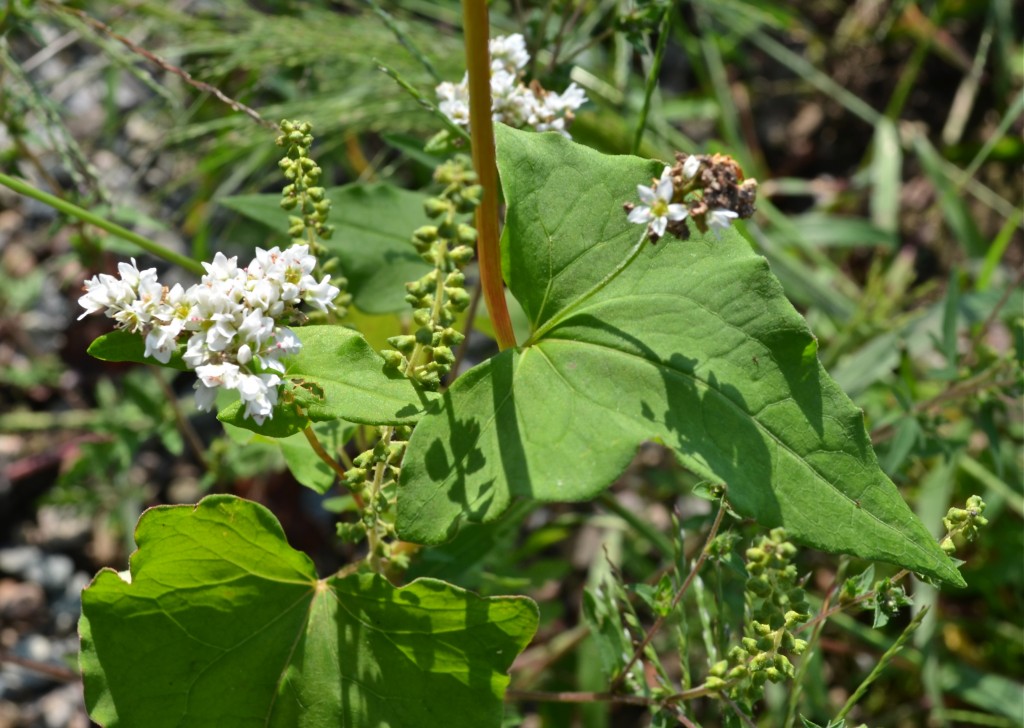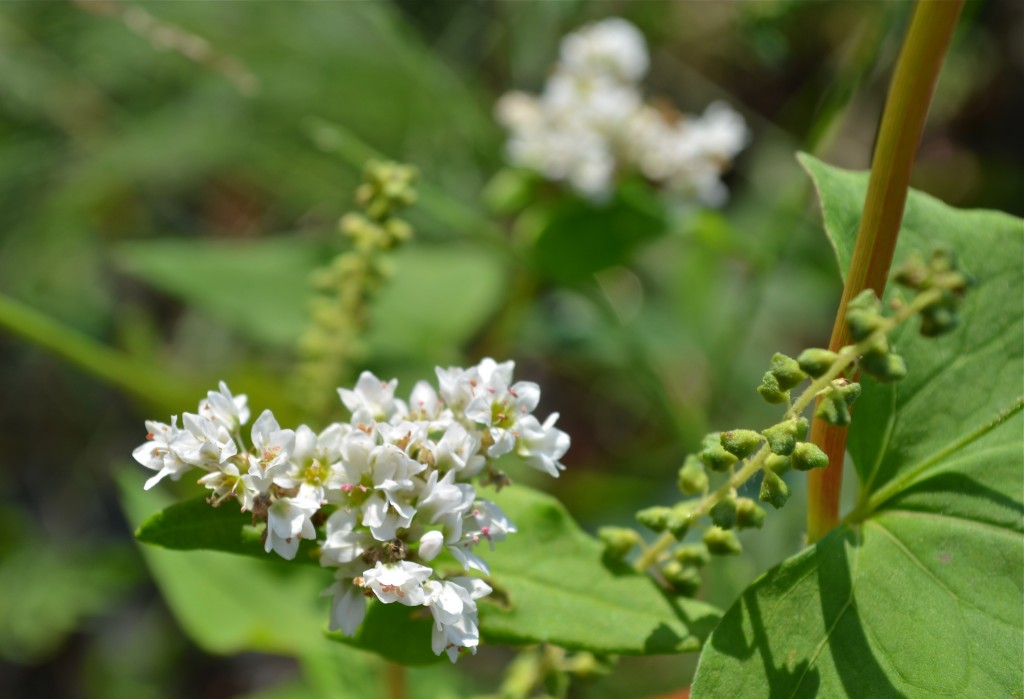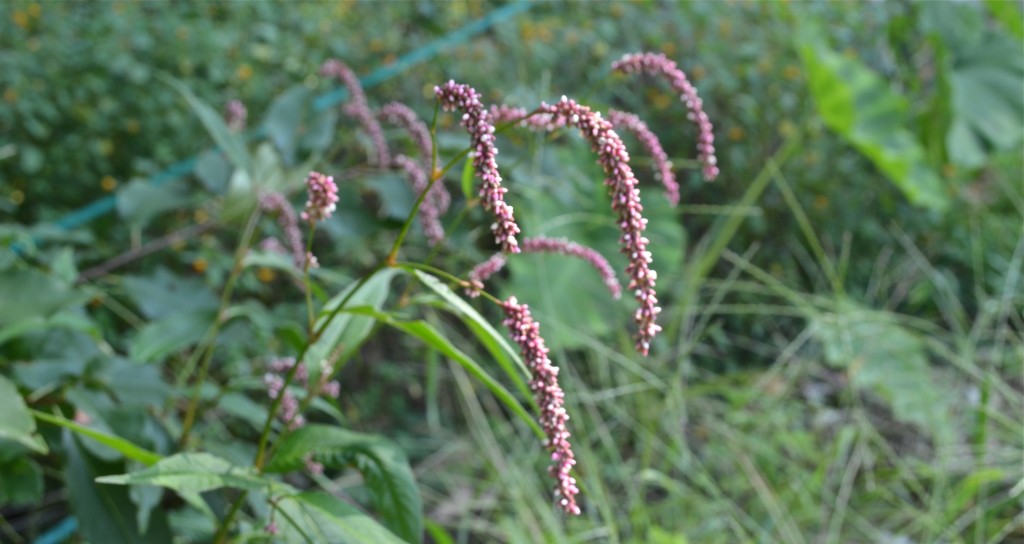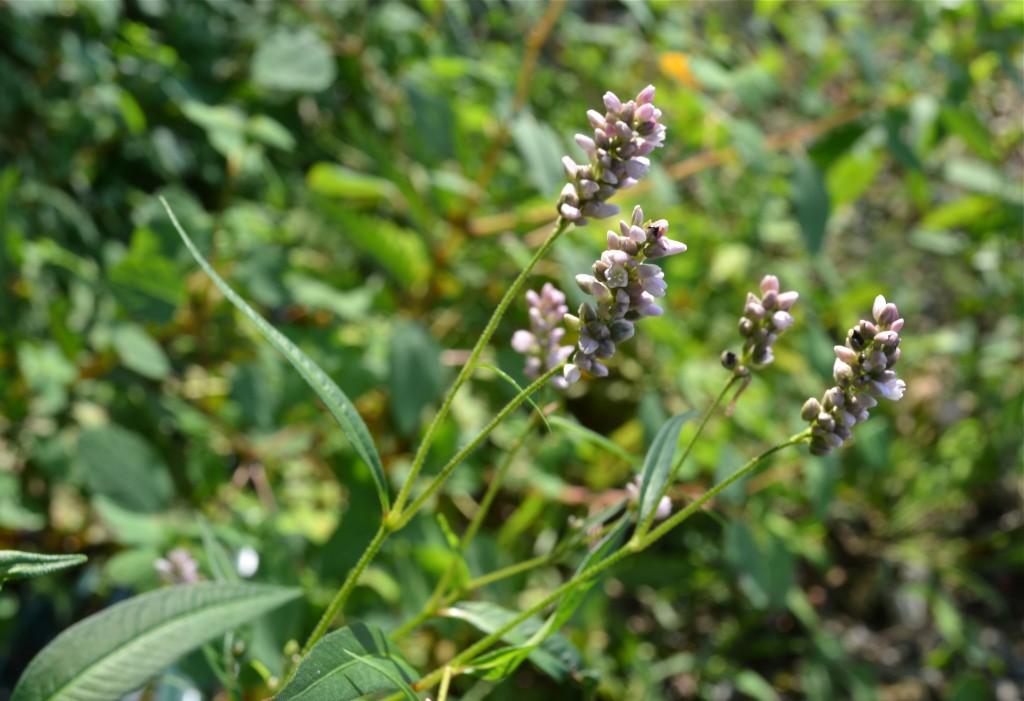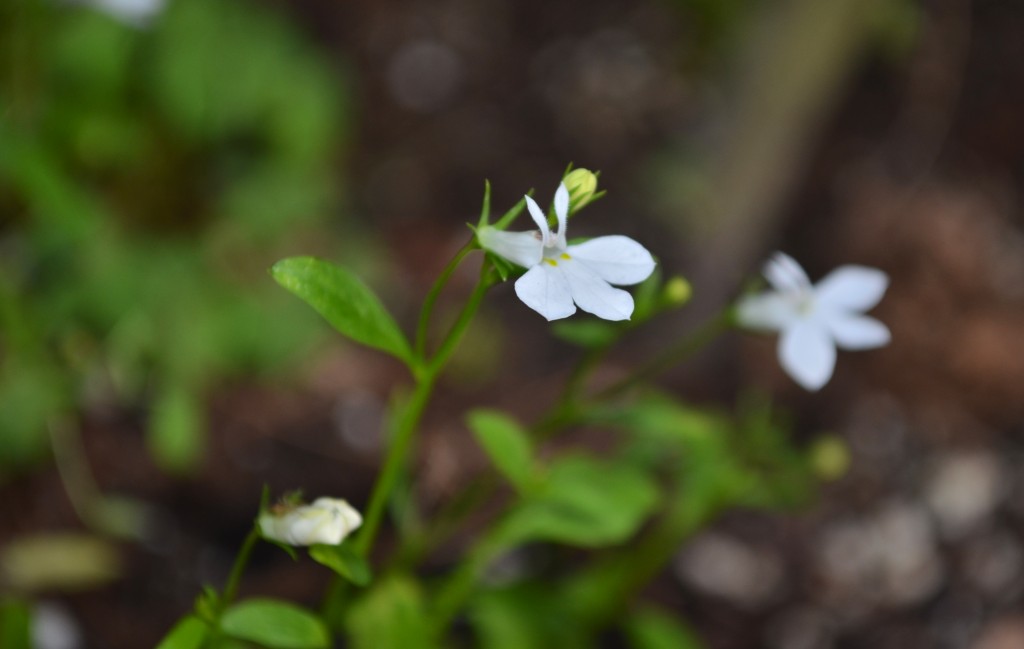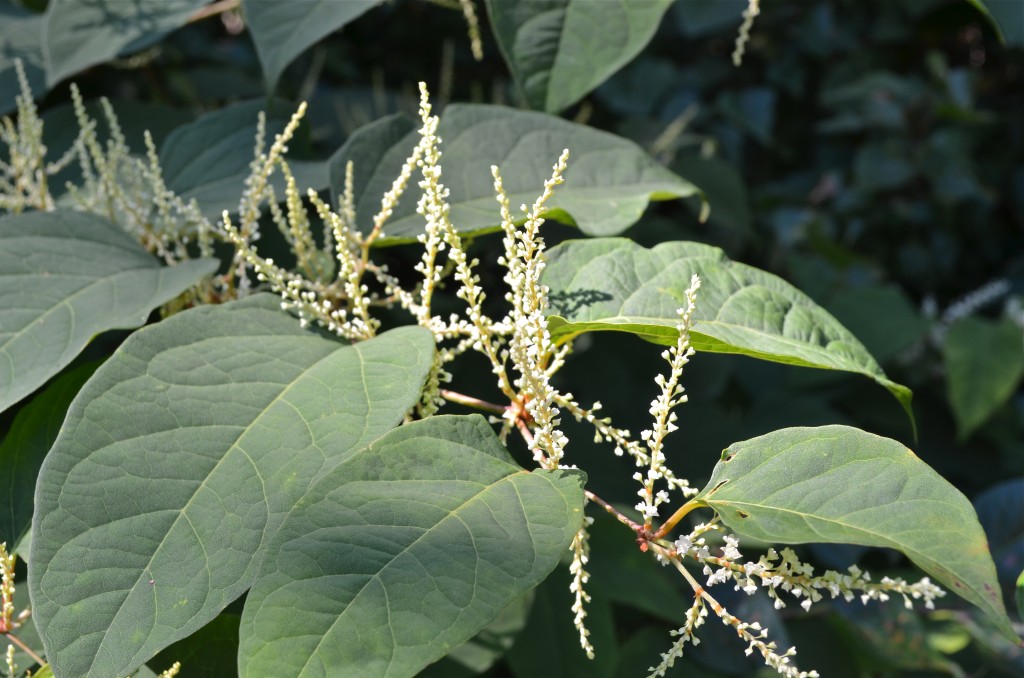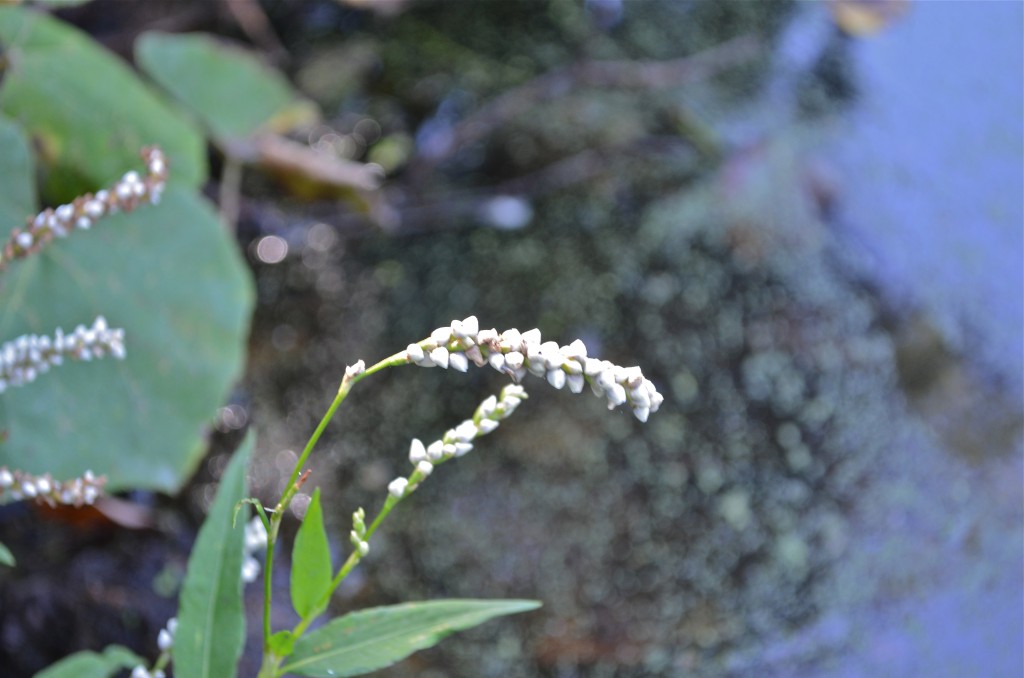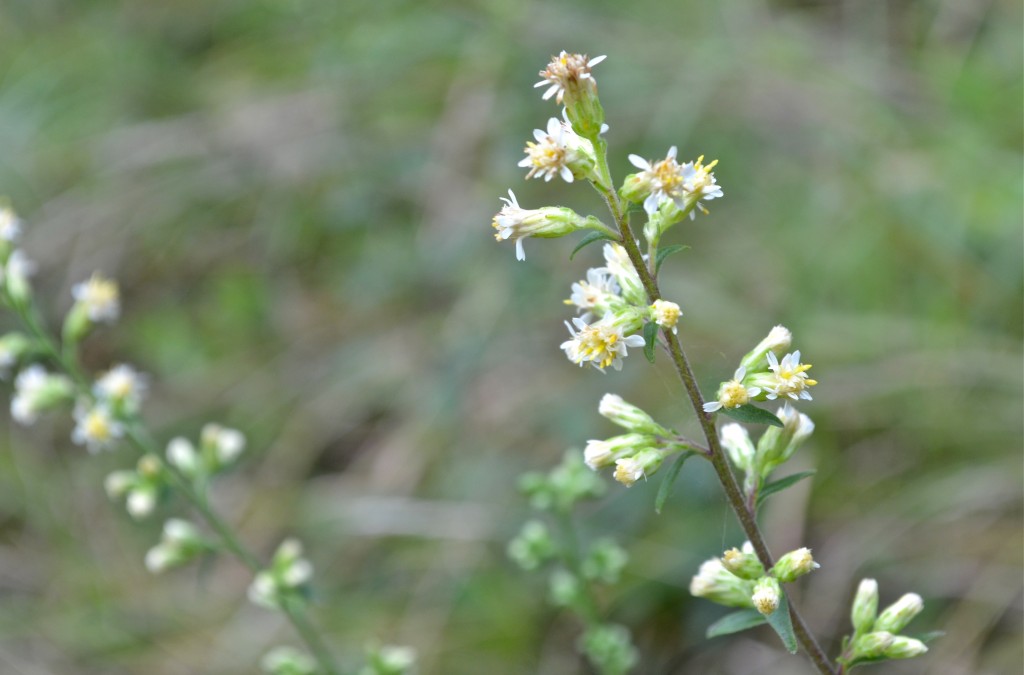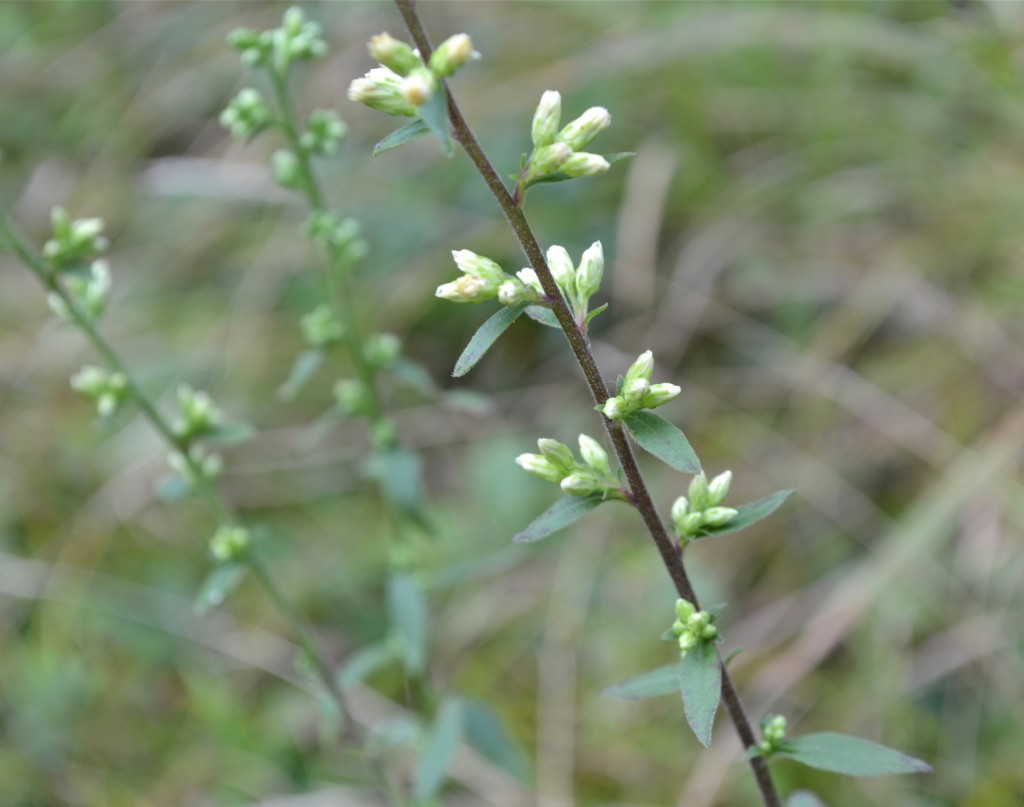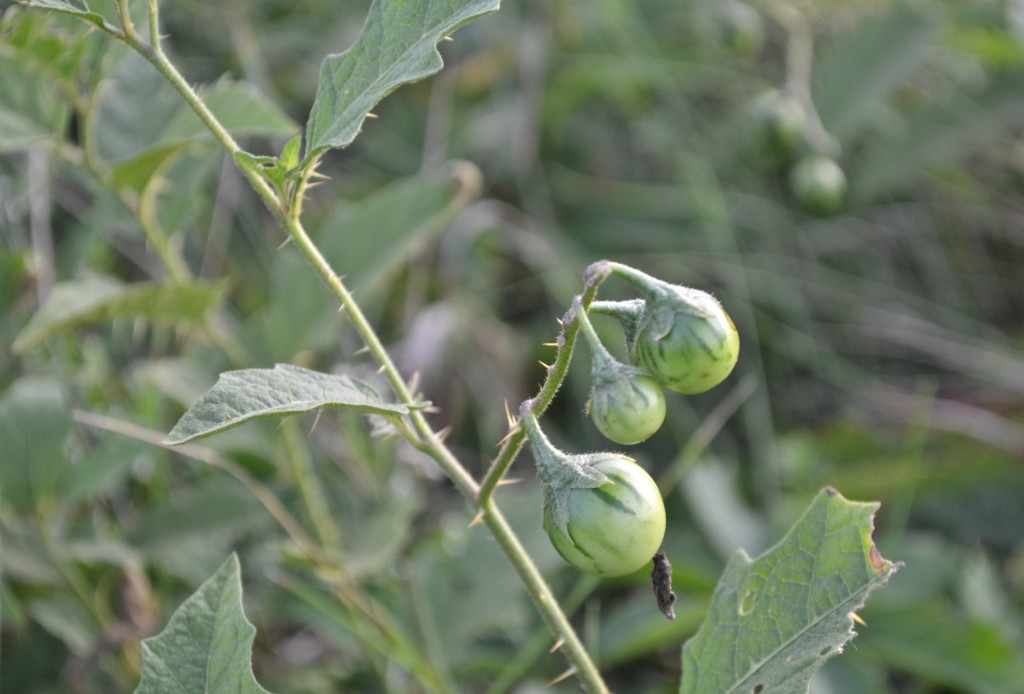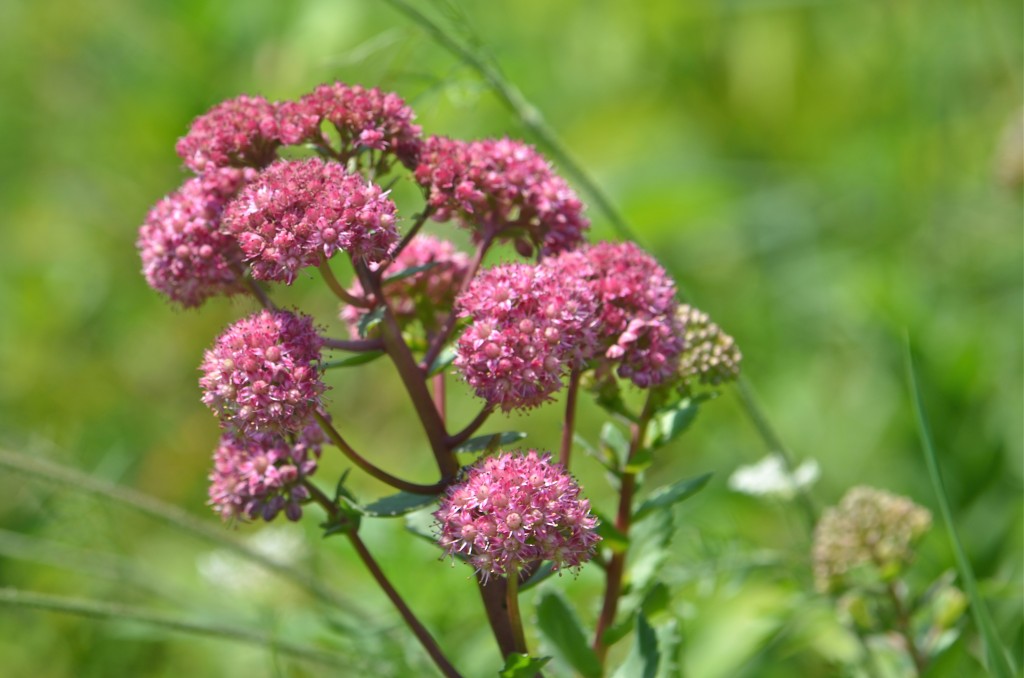
As we approach the end of summer, it was great to get this surprise– a really showy new flower. It looks a lot like purple milkweed, but has distinctive succulent leaves that are very regular and same-sized all the way up the stalks. An unusual characteristic: the leaves can be alternate or opposite. It’s named Live Forever because it’s very persistent and can grow from any small bit. We saw just a couple of plants in this whole field of other flowers– I wonder if this is the beginning of a big colony.
It has several intriguing common names that come from this: put the leaf in your mouth until it’s soft, and when the membranes are sufficiently loosened, you can inflate the leaf like a little balloon. Crassulaceae (Stonecrop) family. Native to Europe.
Live Forever, Witch’s Moneybags, Midsummer-Men, Orpine, Aaron’s Rod, Pudding-bag Plant (Sedum purpureum)

